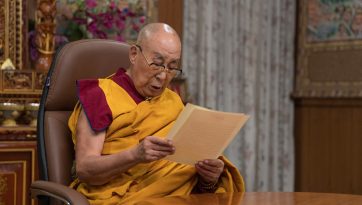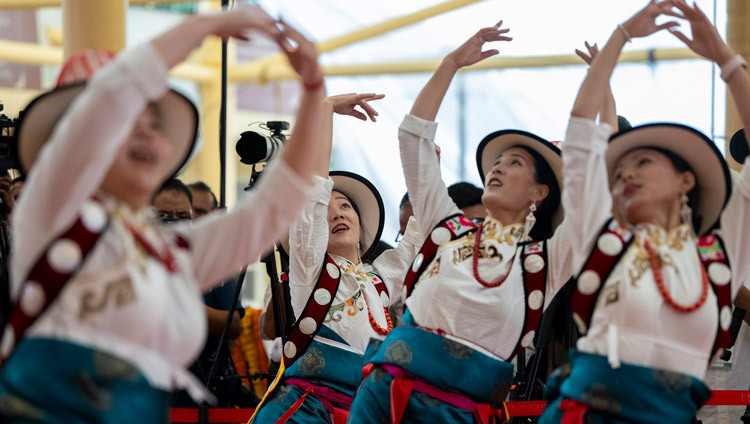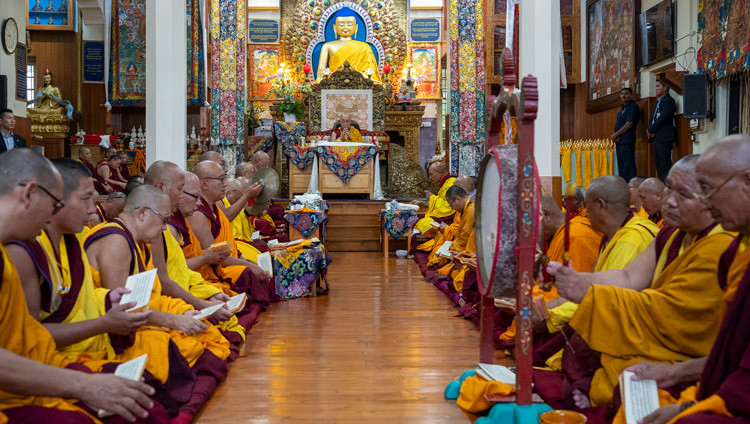IV. BASIC NEEDS OF TIBETANS
Subject Matters of Self-government
1) Language
Language is the most important attribute of the Tibetan people’s identity. Tibetan is the primary means of communication, the language in which their literature, their spiritual texts and historical as well as scientific works are written. The Tibetan language is not only at the same high level as that of Sanskrit in terms of grammar, but is also the only one that has the capability of translating from Sanskrit without an iota of error. Therefore, Tibetan language has not only the richest and best-translated literatures, many scholars even contend that it has also the richest and largest number of literary compositions. The Constitution of the PRC, in Article 4, guarantees the freedom of all nationalities “to use and develop their own spoken and written languages …”.
In order for Tibetans to use and develop their own language, Tibetan must be respected as the main spoken and written language. Similarly, the principal language of the Tibetan autonomous areas needs to be Tibetan.
This principle is broadly recognised in the Constitution in Article 121, which states, “the organs of self-government of the national autonomous areas employ the spoken and written language or language in common use in the locality.” Article 10 of the Law on Regional National Autonomy (LRNA) provides that these organs “shall guarantee the freedom of the nationalities in these areas to use and develop their own spoken and written languages….”
Consistent with the principle of recognition of Tibetan as the main language in Tibetan areas, the LRNA (Article 36) also allows the autonomous government authorities to decide on “the language used in instruction and enrolment procedures” with regard to education. This implies recognition of the principle that the principal medium of education be Tibetan.
2) Culture
The concept of national regional autonomy is primarily for the purpose of preservation of the culture of minority nationalities. Consequently, the constitution of PRC contains references to cultural preservation in Articles 22, 47 and 119 as also in Article 38 of the LRNA. To Tibetans, Tibetan culture is closely connected to our religion, tradition, language and identity, which are facing threats at various levels. Since Tibetans live within the multinational state of the PRC, this distinct Tibetan cultural heritage needs protection through appropriate constitutional provisions.
3) Religion
Religion is fundamental to Tibetans and Buddhism is closely linked to their identity. We recognise the importance of separation of church and state, but this should not affect the freedom and practice of believers. It is impossible for Tibetans to imagine personal or community freedom without the freedom of belief, conscience and religion. The Constitution recognises the importance of religion and protects the right to profess it. Article 36 guarantees all citizens the right to the freedom of religious belief. No one can compel another to believe in or not to believe in any religion. Discrimination on the basis of religion is forbidden.
An interpretation of the constitutional principle in light of international standard would also cover the freedom of the manner of belief or worship. The freedom covers the right of monasteries to be organised and run according to Buddhist monastic tradition, to engage in teachings and studies, and to enroll any number of monks and nuns or age group in accordance with these rules. The normal practice to hold public teachings and the empowerment of large gatherings is covered by this freedom and the state should not interfere in religious practices and traditions, such as the relationship between a teacher and his disciple, management of monastic institutions, and the recognition of reincarnations.




